Ahead of the rest day, all four games in the third round of the 2022 Candidates finished with a draw
Following three rounds of the Candidates, Fabiano Caruana and Ian Nepomniachtchi are in the lead with two points. Behind them are Duda, Firouzja, Rapport and Nakamura on 1.5. They are followed by Teimour Radjabov and Ding Liren with one point.
While some of the Candidates may not be happy with their performance today, they all achieved an important goal: not to go into a free day with a defeat hanging over their heads.
Despite all games ending in calm waters, it wasn’t smooth sailing in all of them.
Teimour Radjabov and Ian Nepomniachtchi were the first to finish, splitting a point after nearly two hours of play. In a familiar line of the Catalan, Radjabov, playing as White, opted for massive exchanges, leading to an even position. Nepomniachtchi had a solid defence, and after a few courteous moves, the two agreed on a draw in a rook endgame.
It seems that both sides welcomed the result. For Radjabov, it was an important break ahead of the rest day. After surviving a surprise attack by the aggressive young lion Firouzja in the first round, then suffering a loss to Nakamura in the second, he needed a break. With one point out of three games, he is still not out of the race for the top. Nepomniachtchi also had reasons to be content: with 1.5 points in two very difficult games, a draw as Black ahead of the rest day was a satisfying result, especially as he finished round three as one of the two leaders in the tournament.
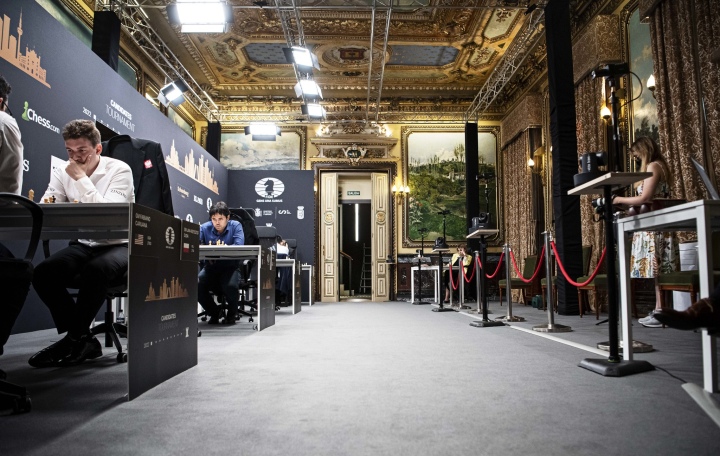
The world’s second highest-rated player Ding Liren let a victory slip away against Richard Rapport in the Grünfeld. Following Rapport’s decision to sacrifice the exchange early in the game, Ding managed to gain an advantage. It wasn’t overwhelming, but White was clearly better. Moreover, after Rapport’s mistake on move 21, Ding dug up the strongest 22.Kf1, for which Chess.com commentator IM Daniel Rensch called him a ‘machine’. However, he then failed to find a clear-cut path to victory on the next move and allowed Black to make a lucky escape with a draw.
The disappointment was obvious on the face of the Chinese player, who quickly left the playing hall after the game. Many see Ding as one of the favourites, but in the first three games – with two draws and a loss – he has not demonstrated the level of play and creativity he is renowned for. As for Rapport – he goes to the rest day with 1.5/3. Having blundered a victory in the second round and saving a lost game in the third, he should probably hope that the rest day will help him stabilise his performance.
The game between American Fabiano Caruana and Jan-Krzysztof Duda of Poland was played until only the kings were left on the board. The American played the English attack in the Najdorf variation of the Sicilian, a line he is known to be one of the best experts. Still, that didn’t show on the board as Duda got a slightly better endgame and had more chances to play for a win. However, Caruana defended accurately and ensured the game ended with a draw.
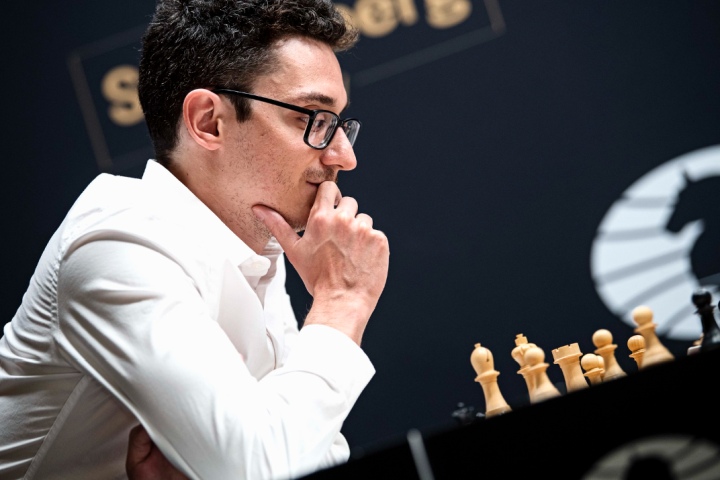
Caruana probably isn’t very happy with a draw with white pieces in a line he knows well, but with two points out of three games, he is in the shared first place. The Polish superstar Jan-Krzysztof Duda also has no reason to be disappointed, having played strongly in all three games and showing his teeth to more experienced players.
The most anticipated game of the day was between the 19-year-old superstar Alireza Firouzja and the unlikely qualifier for the Candidates, Hikaru Nakamura. It was the first time the two had played a classical game, and it was the first time in the tournament that Firouzja was leading white pieces (having played with Black in both of the first two games). Firouzja managed to surprise Nakamura in the Nimzo-Indian and got a very promising endgame. Although on the back foot, the American defended himself well and, despite some imprecisions, managed to find the right moves when it mattered the most. Firouzja’s determination to push until the very end is proven by the fact that only the two kings and a knight remained on the board when a draw was agreed upon after five hours of play.
In the three rounds so far, both Firouzja and Nakamura showed resilience. Their score of 1.5/3 means that they are in a solid position for the rest of the tournament.
Here follows a closer look at the games from Round 3 of the Candidates.
Ding Liren vs Richard Rapport: The great escape
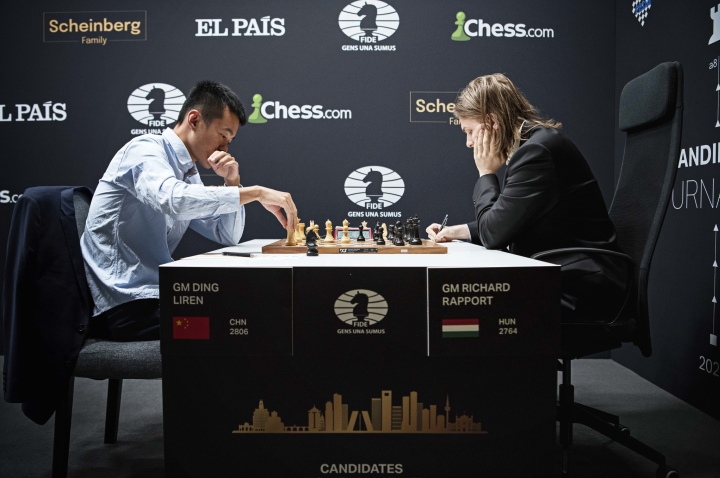
The history of the encounters between Ding and Rapport suggests the two are evenly matched. They have played ten times before in classical games, with seven ending in a draw and Ding leading Rapport 2:1 in victories. In Madrid, Ding was on the brink of extending that lead, but he didn’t.
In the Grünfeld, White (Ding) got more initiative in the centre but was exposed to attacks from Black’s heavy pieces. In a familiar line, Rapport opted for the rarer move 14…Qd6, with the idea of offering an exchange of queens, which would help Black attack the pawns. Ding rightly refused to trade the queens and then started with an advance on the kingside with the h4 move, which would prove to be very important in the later stage of the game.
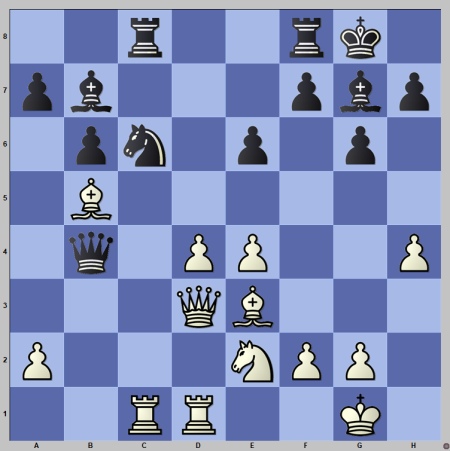
Rapport responded with a natural 17…Rfd8, but 18.Bg5! came as a highly unpleasant surprise for Black.
Rapport opted to sacrifice an exchange by playing 18…Nxd4, hoping that his bishops pair plus an extra pawn was enough of a compensation.
It was not the case, though, as after a subtle 22.Kf1 by Ding, Rapport captured on e2 with his knight and found himself on the verge of defeat.
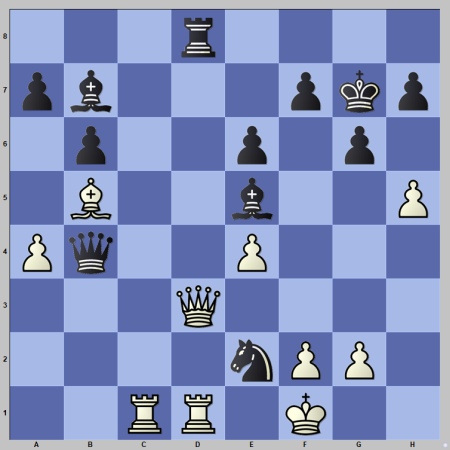
Surprisingly (given that Ding spent a lot of time before playing 22.Kf1), the Chinese GM recaptured on e2 with the queen. He could have taken the rook on d8 instead, emerging two exchanges up, while Black’s threats were not so dangerous. His king would have been exposed to Black’s bishops, and he would have to play precisely, but the variations were not that difficult to calculate.
Still, following further trades of pieces, the game simplified, leaving White with an extra exchange and a better position.
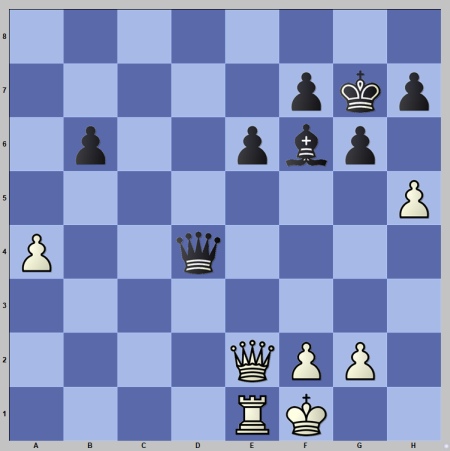
However, here Ding missed his last chance to pose problems for Black. First, he gave up his h5 pawn exchanging it for a g6 pawn. Then he returned the extra exchange and directly entered a queen endgame which was dead even.
Ding wasn’t happy with how he played the final part of the game. He swiftly agreed on a draw and left the playing hall clearly dissatisfied.
It was a psychologically tough game for Ding, who with two draws and a loss, is yet to reach his element and show why he is the second-highest-rated player in the world. On the other hand, Rapport is counting his blessings and, given his play in the past three rounds, must be satisfied with 1.5 points.
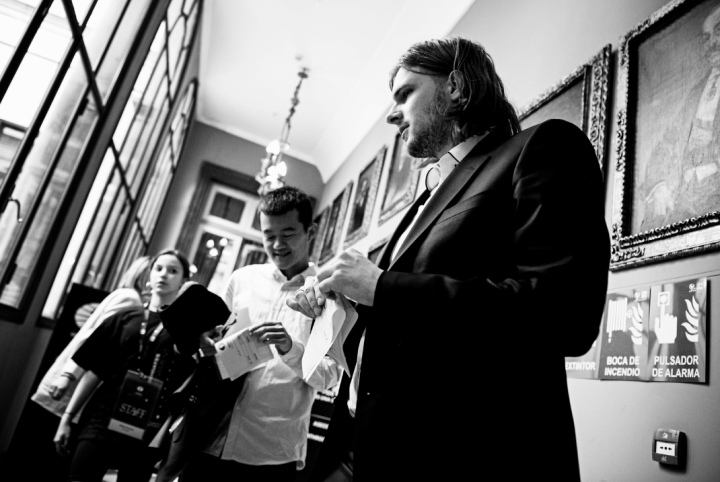
Fabiano Caruana vs Jan-Krzysztof Duda: Turning the tables
The history of the duels between the two was clearly in Caruana’s favour, with three victories and three draws. Still, in the following game, it was Caruana who was on the back foot, having to play for a draw.
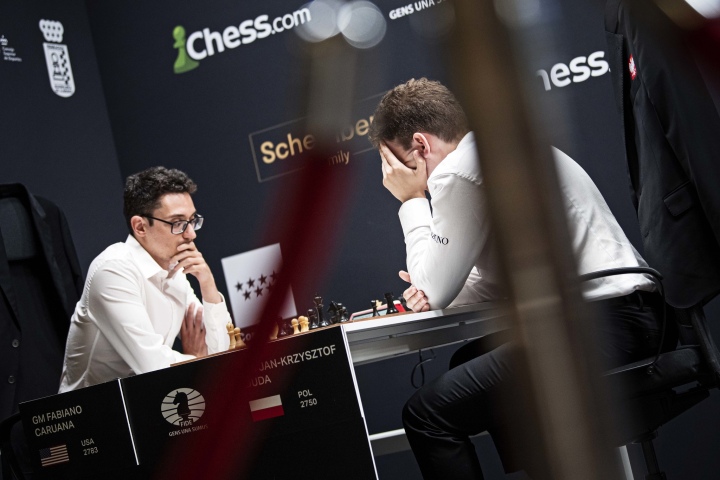
The English attack in the Najdorf was played, and Caruana is probably one of the world’s leading experts in this variation. It was a brave decision by Duda, who has already shown in the previous two games that he isn’t shy about challenging his opponents in their zone of comfort.
Following White’s long castle and the exchange of minor pieces in the centre, the two entered a well-known endgame which is considered to be slightly better for White. However, the young Pole manoeuvred with great confidence – he timely transferred his knight to c5 and equalised completely.
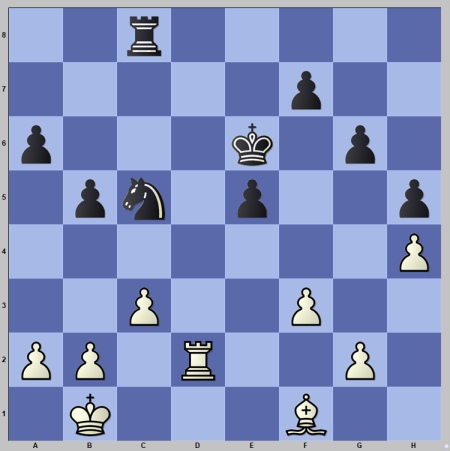
Moreover, after 29.c4 b4 the emerging position seemed to be slightly favouring Black. However, it was not enough to unnerve Caruana. The American timely sacrificed a pawn to activate his king and force his way to the queenside. Still, the two decided to play until the end, exchanging all the pieces on the board.
Although probably not satisfied with the outcome of today’s game, Caruana has two points in three games and shares the first place. Duda is also on the right track: with just half a point behind the leaders and having shown confidence in play, he is in a good spot ahead of the rest day.
Teimour Radjabov vs Ian Nepomniachtchi: Short and – dull
There isn’t much to report about this game. Statistically, Radjabov had a small advantage as he was leading white pieces and, also, in the four previous encounters with Nepomniachtchi, he won one of them while three ended in a draw. In reality – Nepomniachtchi was the favourite as he was leading in the tournament and had a much better success rate in events in the past two years (including a victory in the previous Candidates).
In the Catalan opening, Radjabov went for a familiar line leading to an equal position. Nepo deployed a solid defence system, ensuring he equalised early on. This was followed by massive exchanges leading to an even rook endgame. After just 30 moves and an hour and 50 minutes of play, the two agreed to split a point.
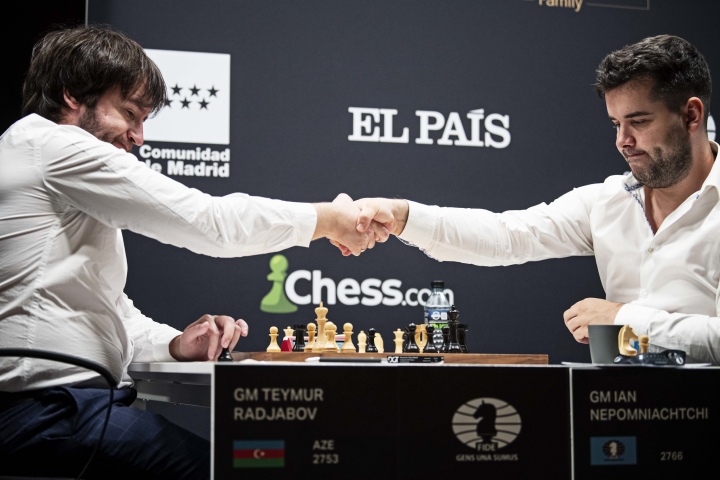
The outcome of the game is somewhat unsurprising. Radjabov started with a draw against Firouzja in a very difficult game where he had defended himself well but then suffered a defeat from Nakamura in round two, having made blunders in the middlegame and in the endgame. He needed a break. A quick draw in this round left him with one point out of three, which is not bad in this early phase of the tournament. Having finished early and with the rest day ahead, Radjabov will have more time than others to re-energise for the following phase of the competition.
From Nepomniachtchi’s perspective, a draw was also satisfying: he was playing as Black, had two interesting and difficult games in the first two rounds where he made 1.5/2 and he enters the rest day with a plus one score and as a co-leader of the tournament, meaning that he is in a very good position.
Alireza Firouzja vs Hikaru Nakamura: The never before seen clash
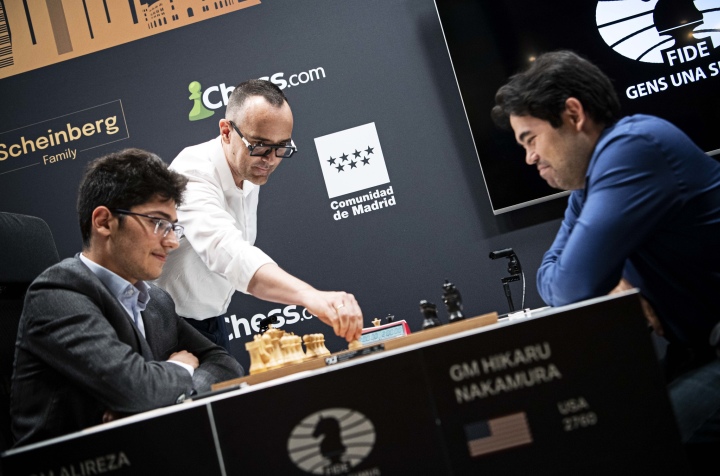
This was the first classical game between the two. Also, this was the first time Alireza Firouzja had played with white pieces in the Candidates. A popular line of Nimzo-Indian with 4.Qc2 was played. It is a well-known theoretical line where White loses some time with several queen moves but preserves two bishops and his pawn structure intact and hopes to gain control over the centre.
Nakamura opted for a very solid line which he had previously tested on many occasions.
However, Firouzja did not come to this game empty-handed: he introduced a very interesting idea, sacrificing a knight for a pawn on the move 16, exposing the black king.
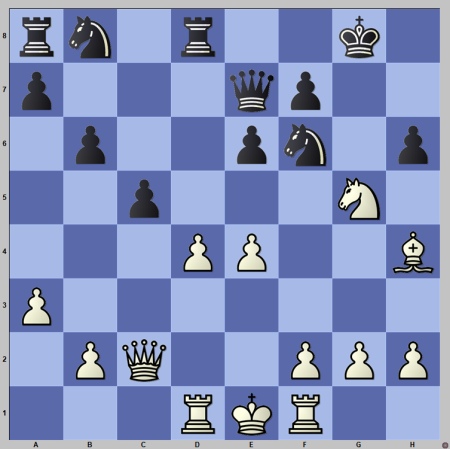
Nakaumra had to be careful. One mistake could have been fatal. In the following position, Black spent 42 minutes considering his options.
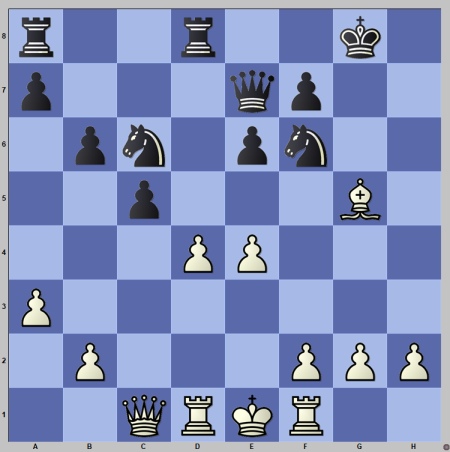
Nakamura decided to play 18…Rxd4. Other options were 18…e5 and 18…Nd4. According to chess engines, all three moves are of equal worth, but from a practical standpoint, the second one looks to be the best.
As played, several moves down the road, the opponents entered an endgame with opposite pawn majorities, with a bishop vs knight and a pair of rooks still on the board. Nakamura, who had a knight, spent a lot of time thinking and visualising the endgame outcome where he had to be more careful than Firouzja.
He fortified his knight on d5, holding both flanks and making sure he wasn’t late for any developments on either side. White had more chances and was significantly better on time, so Nakamura had to play both precisely and fast. Firoiuzja proceeded with his plan advancing the pawns on the kingside, while Nakamura was not as fast with his counterplay on the opposite wing.
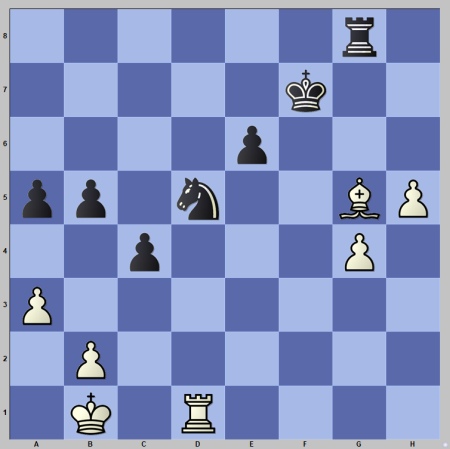
Nakamura seemed to be struggling here: he attacked the bishop on g6 but that allowed White to further advance his h-runner with h5-h6 using tactical motifs.
However, at the critical juncture of the game, White took a natural but maybe wrong decision.
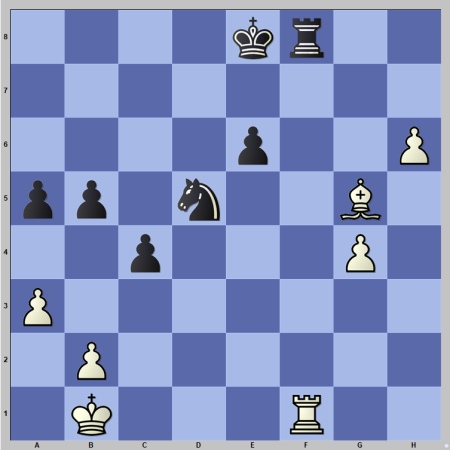
Firouzja went for an exchange of rooks 37.Rxf8, which usually favours the party with a bishop. Here, however, we see an exception to this rule as keeping the rook on the board (37.Re1 or Rc1) would have been much more unpleasant for Black.
The analysis showed there was a path for Black for a draw in this bishop vs knight endgame, but Nakamura had to find it in difficult circumstances: in a weaker position, short on time, he had to be very precise, brave and fast, while at the same time facing the most promising 19-year-old in the chess world. And Hikaru was up to the challenge!
Nakamura managed to regain himself and skillfully held his ground, always making sure his knight would get where it was needed the most, controlling both flanks.
Firouzja tried everything possible, but when there was just one knight left on the board with two kings, even the ambitious young lion from France had to accept that it was a draw.
With 1.5/3 both players are in a good position. They both proved to have the nerves and the appetite for a big fight: while Firouzja attacked aggressively and defended bravely when needed, Nakamura managed to stage a comeback after a defeat in round one.
Monday the 20th of June is a rest day.
The fourth round of the Candidates starts on Tuesday the 21st of June at 3 PM CEST at the Palacio de Santona in Madrid.
The pairings of the fourth round are as follows:
Richard Rapport vs Hikaru Nakamura
Ian Nepomniachtchi vs Alireza Firouzja
Jan-Krzysztof Duda vs Teimour Radjabov
Ding Liren vs Fabiano Caruana
For more information please visit: https://candidates.fide.com/
Text: Milan Dinic
Photos: FIDE / Stev Bonhage
2022 Candidates Tournament Partners:







